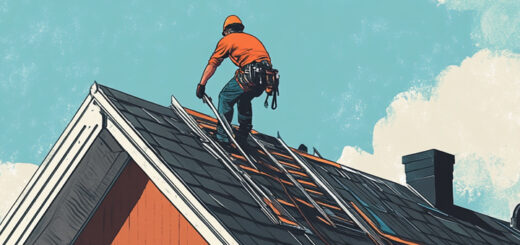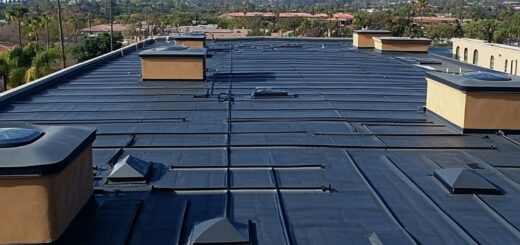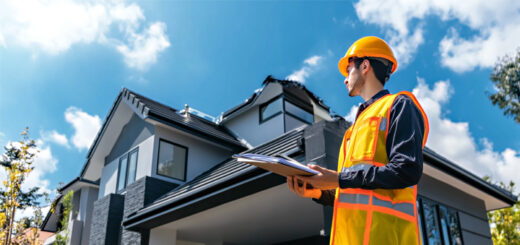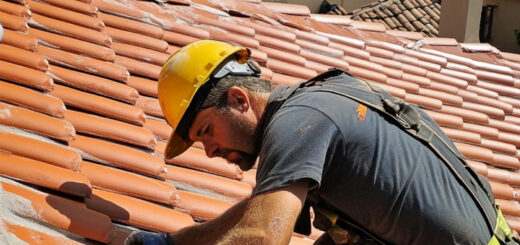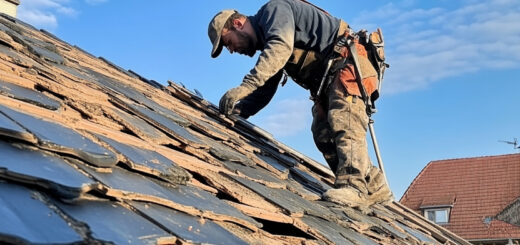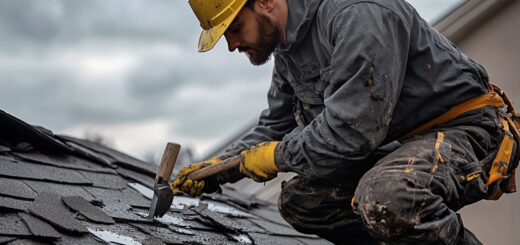How to Budget for Roof Repairs
Understanding the importance of budgeting for roof repairs is crucial for homeowners who want to maintain their property’s integrity and value. Roof maintenance costs can vary significantly depending on the extent of the damage and the materials required, making it essential to plan ahead. By budgeting for repairs, you can avoid unexpected financial burdens and ensure that necessary work is performed promptly.
Budgeting allows you to allocate funds specifically for roof maintenance, which helps in managing your overall household expenses more effectively. It also provides a clear picture of when larger investments might be needed, such as complete roof replacements or significant repairs due to severe weather conditions.
Planning roof expenses involves assessing your current roof’s condition and estimating potential future costs based on its age and material type. Regular inspections by professionals can help identify minor issues before they turn into costly problems, allowing you to adjust your budget accordingly.
In summary, understanding why it’s important to budget for repairs not only safeguards your home but also gives you peace of mind knowing you’re prepared for any roofing challenges that may arise.
Assessing the Condition of Your Roof: When is a Repair Necessary?
Regular roof inspection is a crucial part of home maintenance, ensuring that your roof remains in good condition and can effectively protect your home. Knowing when a repair is necessary can save you from costly damage in the long run. Here are some key signs to look for during your roof inspection that indicate you may need a repair.
One of the primary signs you need repair is visible damage to shingles. This could include curling, cracking, or missing shingles, which can expose the underlying materials to weather elements and lead to leaks. Additionally, check for granule loss if you have asphalt shingles; granules protect against UV rays and weathering.
Another indicator of roofing issues is water stains on your ceiling or walls inside the house. These stains often point to leaks caused by damaged flashing or compromised underlayment. Evaluating roof damage also involves checking for sagging areas on the roof surface, which might suggest structural issues needing immediate attention.
Furthermore, inspect your attic for any signs of moisture or daylight seeping through the roof boards. Identifying roofing issues early on helps prevent more severe problems like mold growth or insulation damage.
By conducting thorough inspections and addressing these warning signs promptly, homeowners can ensure their roofs remain durable and effective against nature’s elements. If you’re unsure about evaluating roof damage yourself, hiring a professional roofer can provide peace of mind and expert advice on necessary repairs.
Estimating Costs: Factors that Influence the Cost of Roof Repairs
When it comes to estimating the costs of roof repairs, several key factors come into play that can significantly influence the final price tag. Understanding these elements can help homeowners make informed decisions and budget accordingly.
One of the primary factors affecting repair costs is the type of roofing material used. Different materials come with varying price points; for instance, asphalt shingles are generally more affordable compared to metal or slate roofs. A comprehensive roofing materials cost comparison is essential to gauge how your choice will impact overall expenses.
Labor costs for roof repair also play a crucial role in determining the total estimate. The complexity and scope of the repair work can drive labor costs higher, especially if specialized skills are required or if there are accessibility challenges with your roof. Additionally, geographical location can influence labor rates due to regional differences in living expenses and demand for skilled workers.
Other factors that might affect roof repair cost estimates include the extent of damage and any underlying issues that may need addressing during repairs. For example, water damage or structural problems could lead to additional work beyond simple shingle replacement.
By considering these variables—material selection, labor needs, and potential complications—homeowners can better anticipate their roof repair expenses and ensure they allocate sufficient resources for maintaining their property’s integrity.
Creating a Detailed Budget Plan for Your Roofing Project
Creating a detailed budget plan for your roofing project is an essential step to ensure that the process runs smoothly and stays within your financial limits. Understanding how to create a budget for repairs can save you from unexpected expenses and stress. Here are some key budgeting tips for home repairs, specifically tailored for roofing projects.
Start by assessing the current condition of your roof. This will help you identify the scope of work needed, whether it’s minor repairs or a complete replacement. Once you have this information, research potential costs by obtaining multiple quotes from reputable contractors. This will give you a baseline figure to work with.
Include all potential expenses in your detailed budget plan. These should cover materials, labor, permits, and any additional costs like waste disposal or unforeseen structural repairs that may arise during the project. It’s wise to allocate around 10-15% of your total budget as a contingency fund to cover any unexpected issues.
When planning your roofing project, consider seasonal factors that might affect pricing and scheduling. For instance, roofing services might be more expensive during peak seasons due to higher demand.
Finally, keep track of all expenditures throughout the project to ensure they align with your initial estimates. Regularly updating your budget plan will help you stay on top of costs and make informed decisions if adjustments are necessary.
By following these steps in creating a detailed budget plan, you’ll be well-prepared for a successful roofing project without financial surprises.
Savings Strategies: How to Save Money on Roof Repairs Without Compromising Quality
When it comes to maintaining your home, roof repairs are often a significant expense that can catch homeowners off guard. However, there are several savings strategies you can employ to manage these costs without compromising on quality. One of the most effective savings tips for repairs is to regularly inspect your roof and address minor issues before they escalate into major problems. This proactive approach can save you money in the long run by preventing costly damage.
Exploring cost-effective roofing solutions is another way to keep expenses in check. Consider materials that offer durability and longevity without a hefty price tag, such as asphalt shingles or metal roofing. These options provide excellent protection while being budget-friendly.
Choosing affordable roofing contractors is crucial when professional help is necessary. It’s important to obtain multiple quotes and check references to ensure you’re getting the best value for your money. Look for contractors who offer transparent pricing and warranties on their work, which can safeguard your investment.
Lastly, consider the DIY vs professional repair savings debate carefully. While DIY repairs might seem like a cheaper alternative, they could end up costing more if not done correctly. Weigh the complexity of the repair against your skill level; sometimes hiring a professional from the start can be more cost-effective than fixing mistakes later on.
By implementing these strategies, you can effectively manage roof repair costs while ensuring your home remains well-protected and structurally sound.
Financing Options: Exploring Payment Plans and Loans for Roof Repair Projects
When it comes to financing roof repairs, homeowners have several options to consider, each with its own set of benefits and considerations. Understanding these options can help you make an informed decision that aligns with your financial situation and home improvement goals.
One popular method is utilizing payment plans for home improvement projects. Many roofing contractors offer flexible payment plans that allow you to spread the cost over a period of time. This option can be especially beneficial if you’re facing an unexpected repair and need immediate work done without the burden of upfront costs.
Another viable choice is securing loans for roof work. Home improvement loans are designed specifically for projects like roof repairs, offering competitive interest rates and terms tailored to your needs. Personal loans or home equity lines of credit (HELOC) are also common choices, providing access to funds based on your creditworthiness or the equity built up in your home.
Each financing option has its pros and cons, so it’s crucial to thoroughly research and compare terms before committing. Factors such as interest rates, loan duration, monthly payments, and any fees should be carefully evaluated to ensure the chosen plan fits comfortably within your budget.
Exploring these financing options gives homeowners the flexibility needed to maintain their roofs without compromising financial stability, ensuring that essential repairs can be completed promptly while preserving peace of mind.
The Role of Insurance in Managing Roof Repair Costs
When it comes to managing roof repair costs, insurance plays a pivotal role in providing financial relief and peace of mind. Home insurance coverage for roofs often includes protection against damage caused by unforeseen events such as storms, hail, or falling debris. To effectively utilize this coverage, it’s essential to understand the specifics of your policy.
Firstly, familiarize yourself with what your home insurance policy covers regarding roof repairs. Policies can vary widely; some may cover only specific types of damage or have limitations based on the age or condition of your roof. Understanding these details can help you avoid unexpected out-of-pocket expenses.
Filing insurance claims promptly and accurately is crucial in maximizing your insurance benefits. Document any damage thoroughly with photographs and detailed descriptions as soon as it occurs. This evidence will support your claim and expedite the process with your insurer.
Additionally, keep in mind that regular maintenance can impact your ability to claim benefits. Insurers may deny claims if they determine that neglect contributed to the damage. Therefore, routine inspections and upkeep are not only beneficial for maintaining the integrity of your roof but also for ensuring that you remain eligible for full coverage when needed.
In summary, by understanding policy coverage and proactively managing both maintenance and claims filing processes, homeowners can effectively leverage their home insurance to manage roof repair costs efficiently.
Take Proactive Steps Today to Secure Your Home’s Future
Securing your home’s future is an essential responsibility that requires proactive measures today to ensure long-term safety and stability. By taking steps such as installing advanced security systems, conducting regular maintenance checks, and investing in energy-efficient upgrades, homeowners can protect their properties from unforeseen threats and enhance their overall value. Implementing smart technology solutions can also provide real-time monitoring and control over home environments, offering peace of mind whether you are at home or away. Furthermore, assessing potential risks like natural disasters or financial uncertainties allows homeowners to develop comprehensive plans that safeguard against these eventualities. Proactively addressing these aspects not only secures the physical integrity of your home but also contributes to a sustainable living environment that benefits both current inhabitants and future generations. By prioritizing these actions now, you are laying a strong foundation for your home’s enduring security and efficiency.
